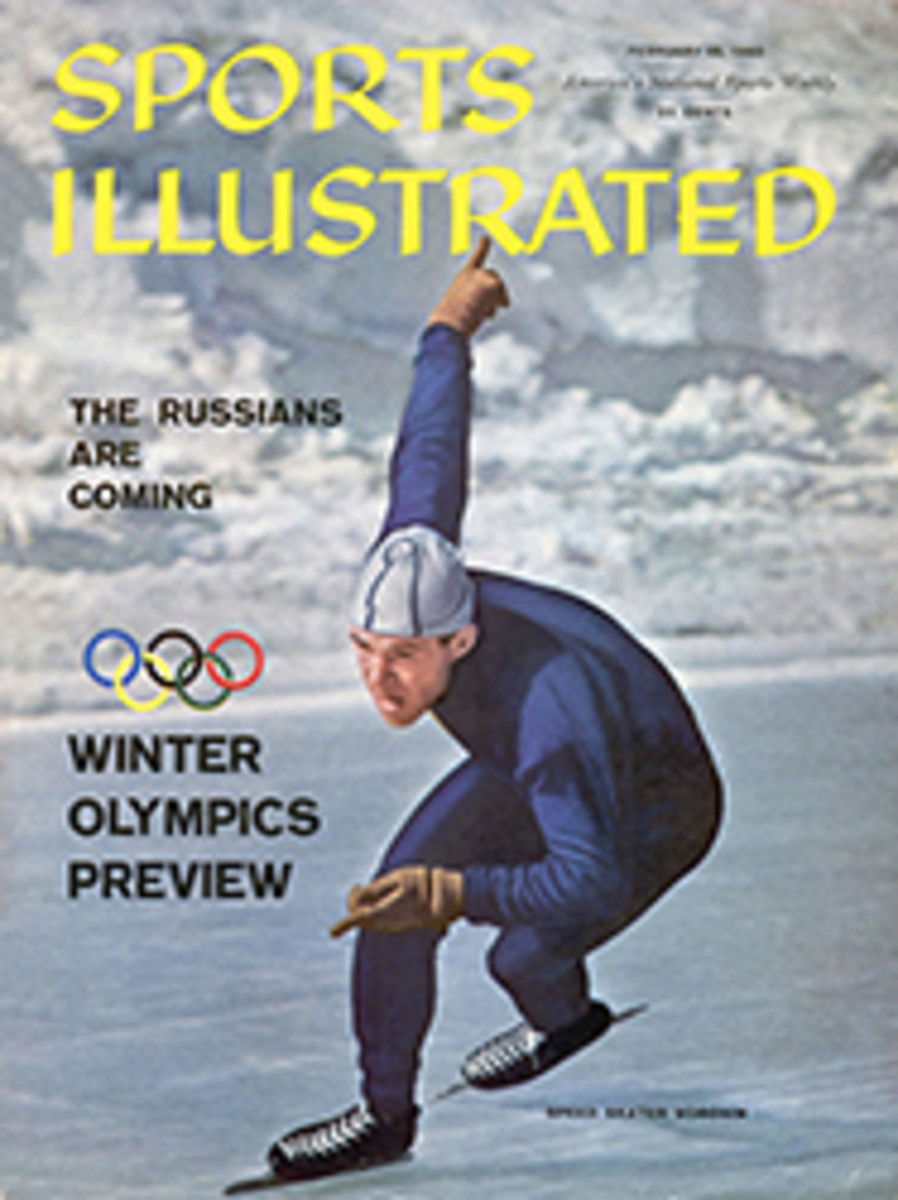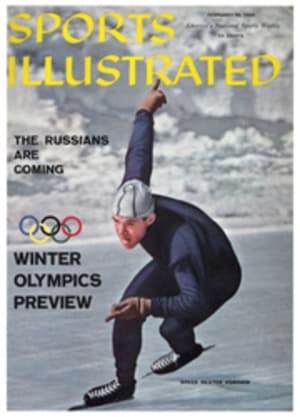
CALIFORNIA'S DESERT EXTRAVAGANZA
In a bold bid to justify their self-bestowed gaudy title of "Winter Golf Capital of the World," the desert communities of Palm Springs, Calif. last week pooled their resources, drafted the facilities of four of their poshest country clubs, called in the services of the world's most venerable insurance institution and then turned loose on their artificial fairways a horde of 528 golfers of all swings and sizes in a tournament grandly dubbed "the Desert Classic." With $150,000 in prizes posted for the 132 pros in the field, it is the richest event in golf.
The net result of all this extravagant effort was that Palm Springs lost $40,000 (plans for national TV fell through at the last minute)—and an obscure pro from Yuba City, Calif. who did not even qualify for the final round became rich, famous and the leading money winner of the 1960 tour to date.
This strange turn of events, which saw the tournament degenerate into a benefit for Buddy Sullivan, came about, of course, as a result of what will doubtless become one of the famous golf shots of history, rivaling in its own wacky way Bobby Jones's putt in the 1929 Open or Gene Sarazen's double eagle in the 1935 Masters. Joe Campbell's hole in one was, like most holes in one, largely due to an error in his calculations. On the 205-yard fifth at Tamarisk on the third day of play, the Indiana-born pro underclubbed himself. He pulled out a two-iron, frowned and replaced it with a three.
It was not quite enough club but the shot rolled downhill toward the hole and in. The Hoosier's hot shot at once rang the bell at Lloyd's of London, which, for reasons known only to itself, had insured the tourney sponsors against this sort of disaster. The underwriters proved to have underclubbed themselves, too. The $50,000 policy cost Tournament President Milt Hicks and his staff only $4,800, a 9-1 bet that paid off.
If underwriters at Lloyd's London office had taken a closer look at the odds they might not have been so hasty about snapping up the policy at such a ridiculously low fee. The chances against a duffer scoring an ace at one specific par-3 hole (aces are seldom made on the par 4s) range from 8,000 to 10,000 to 1. For the more skillful professionals, however, the actual odds, based on last year's harvest of 29 aces in 46 tournaments, shape up like this:
A given pro at a given hole 2,800 to 1
The pro during a given round 700 to 1
The pro during an entire 72-hole event 175 to 1
The field during a given round (based on an average of 110 pros per round) 13 to 2
The field during a 72-hole event 13 to 8
120 pros at Palm Springs (90 holes) 6 to 5
Campbell's shot also put a gloss on Sullivan's credit rating. Sullivan, who won only $92.68 on the tour last year and was doing even worse this year, might have crept through the annals of golf forever unnoticed if his crony, Joe Campbell, hadn't sent for a deck of cards a couple of nights before the tournament. Over a gin rummy game, Campbell, a considerably better golfer than fortune teller, was incautious enough to suggest to Buddy that they split their interest in the hole-in-one prize. If either made one, both shared. Sullivan, as it happened, never came close. In fact, he had a great deal of difficulty merely negotiating the course in par and struck off a hairy 290 for his four rounds, not even good enough to qualify for the final day. Campbell, after his bonanza, played steadier but indifferent golf and picked up an additional $572 for his 24th-place finish.
But when the man-swarm of press, officials and just plain curiosity-seekers descended by cart, helicopter auto and foot on Campbell after his hole in one, they learned even more of the complicated credit financing of today's golfers. Most of the information was volunteered by Joe's chatty, friendly little wife, Imogene, and as Imogene talked away, Joe began to look less and less lucky and the writers began to call on their fragile remembrance of mathematics.
Like most of the young players of today, the jaunty Campbell has a sponsor. In this case, it is Charles Faust of Knoxville, who encouraged Joe to set out on the pro swing and, in order to take the specter of possible poverty out of his ward's mind, he agreed to bank-roll him to the extent of $200 a week, with Joe to split all his on-course earnings over $10,000 with his sponsor.
Faust deposited $5,000 in a Knoxville bank for this purpose, but neither Joe nor his angel have had to dip into their capital, Campbell managing to stagger from meet to meet out of current earnings. Campbell's $25,000 cut will go into this account. He says that he and Faust will each pay taxes on $12,500. This presumes, of course, that Joe makes over $10,000 on the tour.
Joe does not have to share with his sponsor-partner any monies he gets from the golf firm he represents nor does he split the $250 a month he gets for being the only golfer on the tour playing out of a New York saloon—Billy Reed's Little Club (SI, Feb.8). Reed gets no share of any of Campbell's winnings.
While overshadowed by the financial adventures of Campbell and Sullivan, the Desert Classic itself was not entirely overlooked. The four courses used—Bermuda Dunes, Tamarisk, Indian Wells and Thunderbird—as expected offered only token resistance to the sharp onslaught of the practiced pros. Thunderbird has the reputation of being the fastest track, and this weekend it was. The pros sped across it on the final day like a field of fillies. The highest score brought in by the first 17 finishers was a 70.
But if the courses offered little resistance to the pros, the five rounds of the tournament proved grueling for the older members of the circuit. Johnny Palmer, 41, grizzled, swart and a tough attacker of a course, was able to stave off the younger set for four rounds, but Palmer had not played a tourney in six months and toward the end the strain proved too much. Arnold Palmer (norelation) and Fred Hawkins rushed past him on the fifth round.
Arnold Palmer, a broad-backed strong boy from Latrobe, Pa., who probably could play five rounds in one day if the price was right, won the 16th tournament of his brief career as a pro with a 67-73-67-66-65, 338. A former national amateur champion, Palmer increased his stature and his right to be considered one of the logical successors to Hogan, Nelson and Snead. He also showed off-course acumen when he picked Dow Finsterwald to split his potential hole-in-one money with.
Only one stroke behind Johnny Palmer as the final round began, Arnold came out of the gate with a rush, birdie-ing the second, seventh and ninth holes. He birdied three more on the back nine, to win the tourney by three strokes. He almost cut another chunk off Joe Campbell's windfall by rimming the cup on the 203-yard 16th. Fred Hawkins, meanwhile, had his run and clawed his way to a 7-under round by the 17th but managed to run into trouble on the 18th, hitting two trees for a bogey. Al Besselink, his blond tresses as impeccable as ever, briefly threatened in the stretch, then fell back as he has done so often before when his putting failed to match his fairway game.
THE TERRIBLE TEMPERED MR. BOLT
Tommy Bolt, after a masterful 63 on a tougher course the day before, smashed his driver in a rage at his inability to break 70 on the Thunderbird. And a promising youngster, Wes Ellis, gained new respect for the rules of golf by failing to play or to declare unplayable a ball he lodged in the branches of a green-side tree. He played a provisional ball and was disqualified. It cost him an estimated $660, the difference between the $140 guarantee which all pros got for making the final round and what his score, 71, would have earned him. None of the pros questioned admitted that concentrating on the hole in one hurt his game. But observers felt that several of the also-rans got that way by hitting too chancy shots at tricky pin positions.
In general, the tourney proved once again that the desert courses, even lengthened, do not contain enough tests of golf for a dark horse to come out of the pack and overtake a front-runner. Even off his game, Johnny Palmer managed to salvage a 70, one under par. And Arnold Palmer said after he had won that one thing he liked about the five-round system was that it allowed him to overcome a "bad" round of 73.
Nevertheless, Palm Springs proposes to continue its 90-hole extravaganza and it fondly expects to become "the Masters of the West." It well may be, but not until its trees grow high enough to make golf in the 60s the exception rather than the rule. Whatever happens, it is doubtful that its inaugural will be remembered for anything but Campbell's hole in one. By Buddy Sullivan, at any rate.
TWO PHOTOS
LITTLE CLUB'S big winners grin broadly after Campbell, wearing New York nightclub insignia, made $50,000 shot. Club Owner Billy Reed shares only in national publicity.
PHOTO
NO. 3 IRON was used by Campbell on hole-in-one shot. Here Campbell displays swing that brought $50,000 prize money.
PHOTO
NO. 5 HOLE at Tamarisk is 205-yard par 3. Campbell's ball landed on the front of the green, rolled downhill into the cup.
PHOTO
NO. 1 MISS was made by Mike Souchak (top right) on second day at Thunderbird eighth hole when ball bounced off flag.

